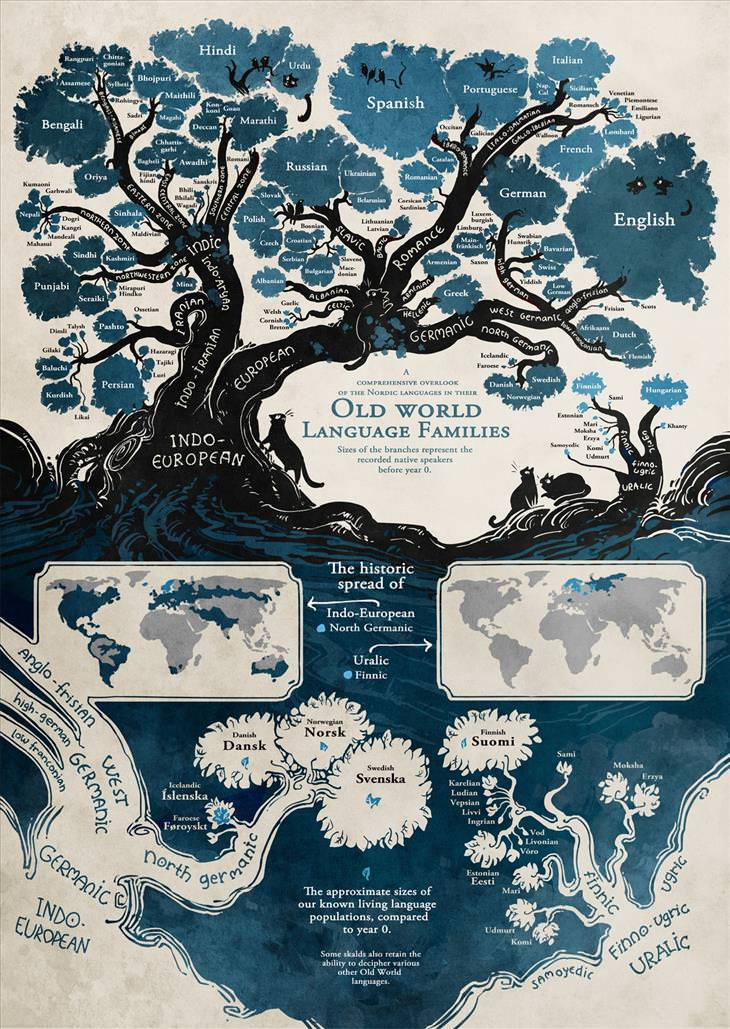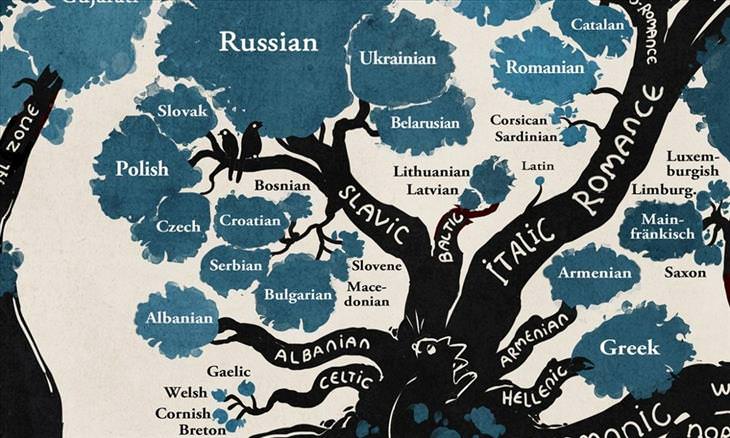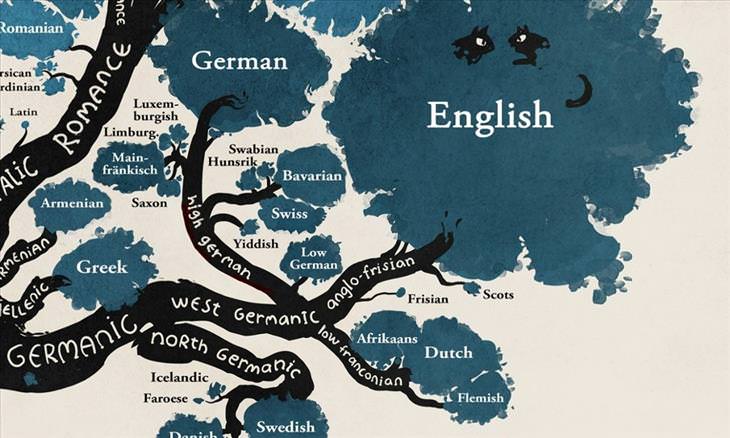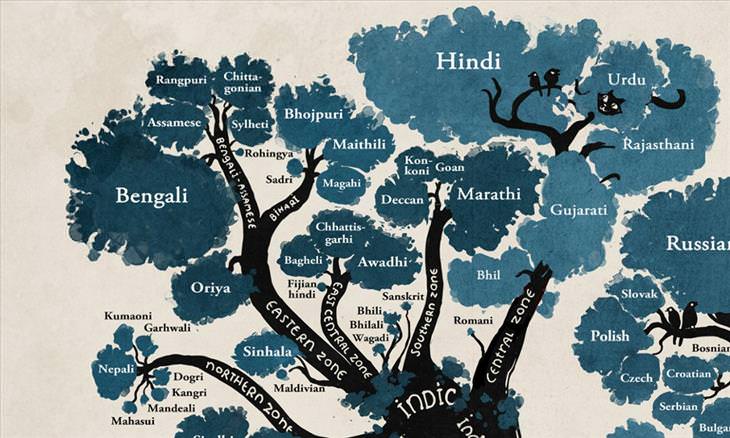
Are you aware that most of the languages that are spoken today can actually be placed into a couple of groups by their origin? This is what Minna Sundberg reveals in an elegant infographic of a linguistic tree which reveals fascinating links between different languages.
Using research data from Ethnologue, Sundberg was able to create a tree metaphor that illustrates how all major European, and many Eastern languages can be grouped into Indo-European and Uralic “families”. The whole image is full of languages, with bigger leaves representing those with the most native speakers. However, even this detailed image does not cover the immense variety of languages that exist.
Sundberg explains that “naturally, most tiny languages didn’t make it onto the graph. There’s literally hundreds of them in the Indo-European family alone and I could only fit so many on this page, so most sub-1 million speaker languages that don’t have official status somewhere got cut.”
Source: boredpanda

How to Distinguish between Chinese, Korean, and Japanese
After reading this guide, you'll be able to tell the Chinese, Korean, and Japanese languages apart!

5 Extremely Healthy Food Combos You Should All Know About...
When paired together, certain foods can be a lot healthier than if they are eaten on their own. Here are 5 extremely healthy food combinations.
 12:04
12:04
8 Little-Known Jobs That Keep the Movie Industry Going
We all know actors, directors and screenwriters, but these are the people that take care of the details, without which movies just wouldn't be that good

14 Things We Bet You Never Knew About Chocolate!
How much do we really know about chocolate? Here are 14 things we bet you didn’t know about chocolate!
 18:25
18:25
How Is It MADE? - Drinking Glasses
We all use drinking glasses every day, but not many know about the precision, skill, and scientific process behind making them.

We Bet You Didn’t Know These Surprising Facts!
The more we learn about the world, the better can we understand how marvelous, fascinating, and unexpected it is. Here are 12 surprising facts to prove it.

This Song By Frank Sinatra is So Beautiful
Sing through the lyrics of Frank Sinatra's Young at Heart here.
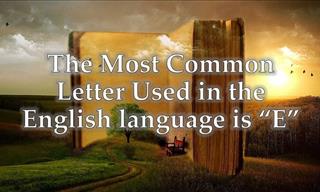
Can You Guess the English Word With Over 600 Meanings?
The English language has been around for so many centuries, it has gathered quite an elusive and industrious history, as seen in these facts
 11:27
11:27
Looking at a 100 Years of High School Fashions...
Here's what high schoolers wore each decade of the 20th century.

Archeologists Are Dumbfounded By These Discoveries
These archelogical sites have been proven to be difficult to explain.

I Bet You Never Knew These U.S. Geography Facts...
Do you consider yourself to be a proud American who knows all there is to know about the good ol’ U.S. of A.? We bet you didn't know these facts!

The Apollo Program: A History of Manned Space Missions
Only 12 men have ever stepped foot on the moon. Find out more about their successful moon landings here!

2024 is Here! And This is Why You Should Be Excited for It
2024 is here! And this is why you should be excited for it.

There is No Greater Blessing than Your Family
Beautiful Words: Having a family to care for is a blessing.

Believe These Myths to Be True? The Facts Are Surprising
Read through 11 common misconceptions, you've likely thought were facts.
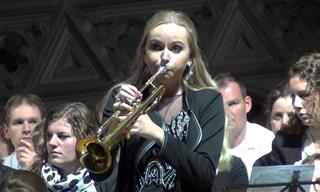 2:57
2:57
'What a Wonderful World' Like You've Never Heard Before!
Listen to this hauntingly beautiful cover of the classic song “What a Wonderful World”.
 2:23
2:23
You Won't Believe What This Man Built in His Back Yard...
This man has created something amazing at his home that has immediately become my dream.

Video Box: The Most Amazing Guinness Records!
Don't miss these 16 world record-breaking feats, performed by both humans and animals alike!

Experience the Dramatic Moments of WWII in Moving Color
This 13-episode television documentary series recounts the major events of World War II in HD color.

Check Your Pockets Now! This Quarter Is Worth Thousands!
There's a quarter out there that is worth thousands of dollars. Here's what you need to look out for.
 8:21
8:21
Wow! I Had No Idea That Whales Could Show Gratitude!
One whale was so grateful for the man who saved his life, he showed his appreciation - by dancing!
 3:10
3:10
How Clean Are Hotel Rooms, Really? Find Out the Answer!
Hotel rooms always look clean and fresh, but are they?
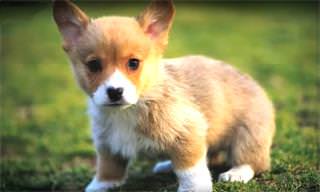 2:10
2:10
God Thought Long & Hard Before Creating the Dog...
They do say dogs are our best friend, and there is a reason for that.

These Female Celebs Have Aged Like Fine Wine (28 Pics)
These female celebrities are aging just like fine wine.
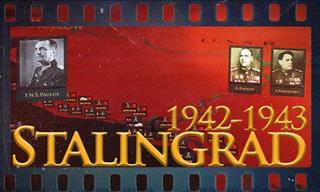 13:08
13:08
The Epic Battle of Stalingrad Comes to Life
One of the most epic battles in history, and the biggest of WWII comes to life and explored in this in-depth video.

Grandma Gets Asked a Question and Has a Perfect Response
When I asked grandma what she thought of events in recent years, I found her answer intriguing. It made me realize how much things have changed...

10 Emmy-Winning Netflix Shows You Don't Wanna Miss...
if you're in need of a binge-worthy series and haven't explored these recommendations yet, prepare to be captivated.
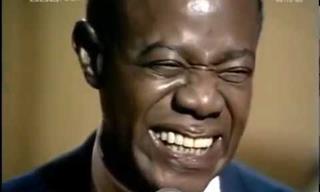 2:30
2:30
The World Needs to Listen to This Song Now More Than Ever
Watch legendary singer Louis Armstrong perform his hauntingly beautiful and iconic song ‘What A Wonderful World’, live during this concert.
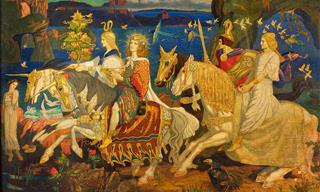
10 of the Fiercest Ancient Celtic Gods and Goddesses
Here we look at the most influential ancient gods and goddesses from the ancient Celtic pantheon.

Where Did These Common Sayings Come From? Fascinating!
You're probably aware of these common sayings, but where did they originate from? Fascinating!

9 ‘Current’ Words That Are Much Older Than You’d Guess
Hipster, Influencer and Dude - all these words sound so quintessentially modern, but you'd be surprised to learn how old they actually are.
 4:13
4:13
This is What Happened to the Man Who Didn't Salute Hitler!
Nearly eight decades have passed since a camera captured the moment a man refused to give Hitler a Nazi salute. Here's what happened to him.

6 Short Stories to Help You Stay Motivated in Life
If you’re feeling down, rather than surf the internet for cat pictures or drowning your sorrows by reading junk, check out these inspirational and powerful Short Stories

This Is What $300,000 Will Buy In 15 Different Countries
If you dream of living overseas, you should know your dream is more attainable than you think. This is what $300,000 would buy you in 15 different countries.
 4:12
4:12
This Video is a Must for All History Buffs!
Seeing history move right before our eyes teaches us so much about the last 2000 years!
 2:57
2:57
This Is One of The Most Beautiful Duets I've Ever Seen
Watch this mesmerizing duet from 1981 featuring Donovan and Crystal Gayle. This live performance is their rendition of the classic 60s song ‘Catch the Wind’
 8:01
8:01
Watch 1,000 People Got Their Eyesight Restored
A YouTuber helped sponsor the treatment of 1,000 blind people. Here are their reactions.

26 Vintage Celebrity Photos Filled with Undeniable Charm
Let's take a look at 26 vintage photos filled with undeniable charm.

12 Freaky Photos of Olympians That Will Shock You
These surreal pictures of Olympians will make you see athletes in a different light.
 5:06
5:06
Watch Andrea Bocelli and His Daughter Perform "Hallelujah"
Watch the legendary singer Andrea Bocelli perform a beautiful rendition of the famous song "Hallelujah" with his little daughter.
 5:33
5:33
White Rose: the Brave Student Resistance to Nazi Germany
White Rose was a secret student organization that opposed the Nazi rule, here is the story of this brave organization...
 3:00
3:00
What is HAMAS? The Terror Organization Explained
What IS Hamas? What are its intentions, and how did it get started?
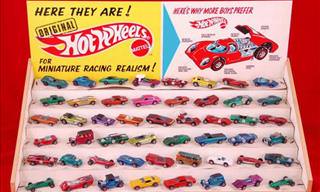
Baby Boomers, Do You Remember These Vintage Products?
If you are member of the baby boomer generation, you may just remember these nostalgic products from your childhood.

22 Facts That Will Change What You Think You Know
From Facebook to Winston Churchill, these 22 surprising facts are very interesting.
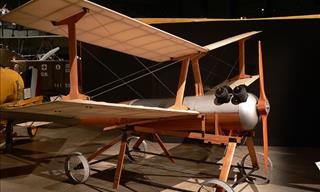
10 World War I Inventions We Still Use Every Day
From trench coats, to pilates and blood banks, all of these 10 things we think of as very modern were actually conceived during WWI.

Meet the 13 Most Influential Japanese Gods and Goddesses
Today, we dive into the rich Japanese pantheon and take a look at some of their most iconic gods and goddesses.

These Old Photos Show a Fascinating Side of History
Each one of these remarkable photos tells a story of bygone history. See how much the world has changed with scenes of both famous faces, events and everyday moments.



